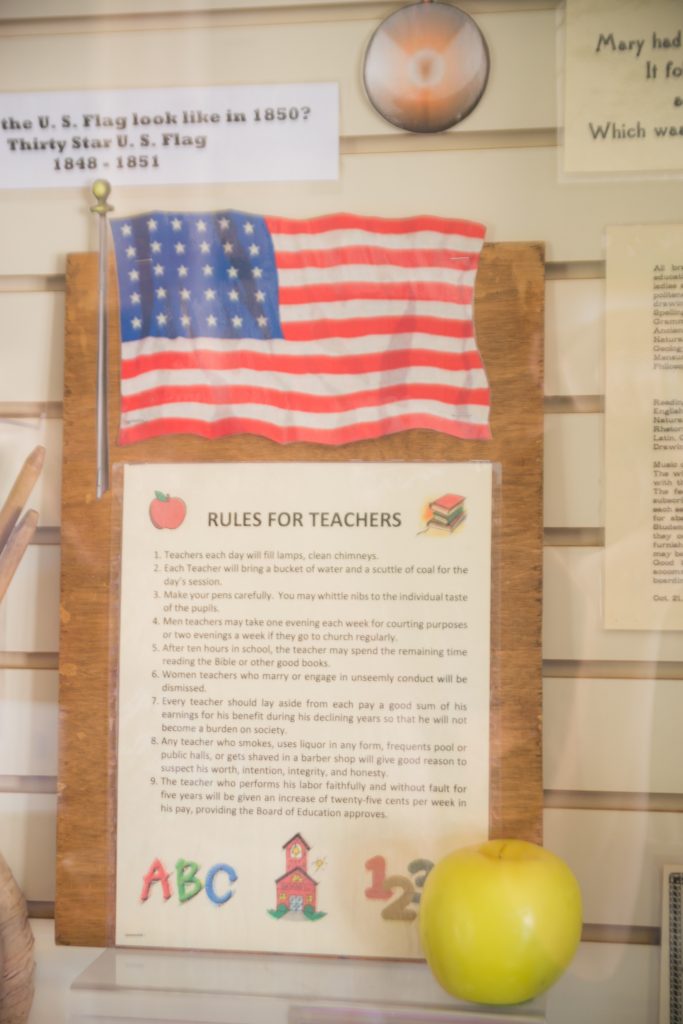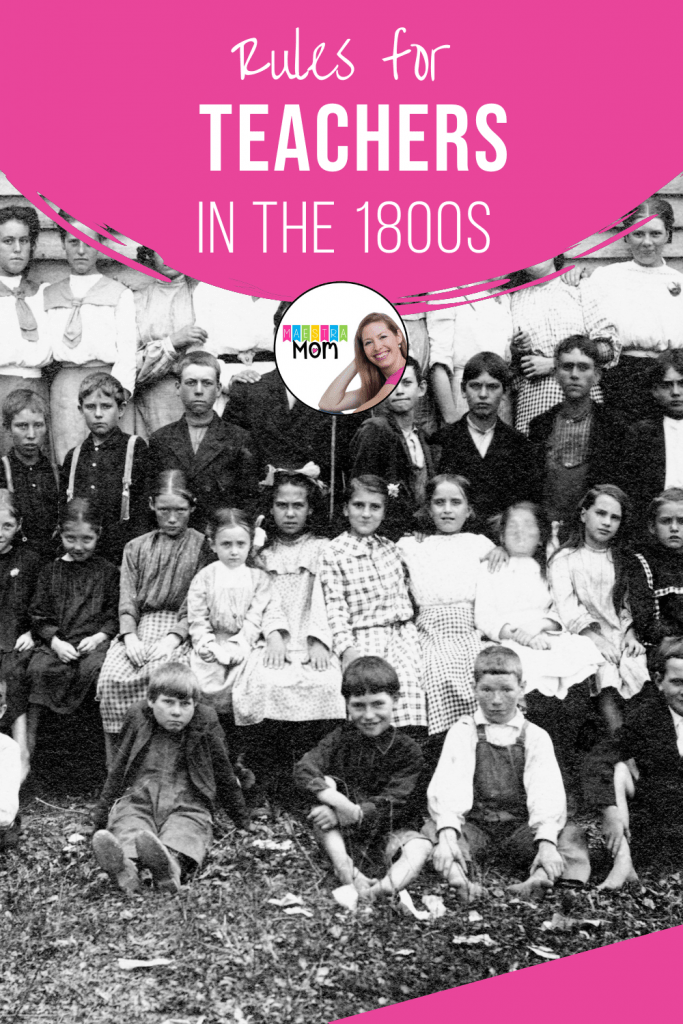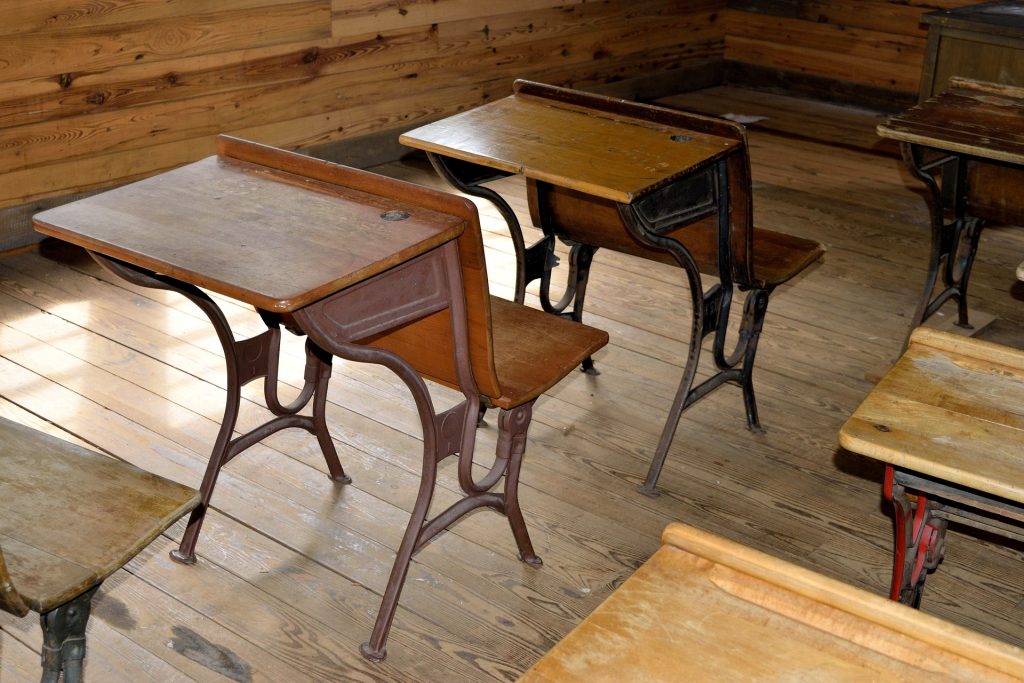Have you ever wondered what it was like for teachers in the 1800s teaching in a one-room schoolhouse? What was the standard for a good teacher during this era?
The kids and I recently went on a field trip to Barrington Farm, a historic site in Texas representing the era of the Republic of Texas when it was an independent country from 1836-1846. While there, I caught a glimpse of a fascinating display about teachers and classroom life. It included this thought-provoking list of rules for teachers in the 1800s.
What do you think about these rules for teachers in the mid-19th century?

Rules for Teachers in the 1800s
- Teachers each day will fill lamps, clean chimneys.
- Each Teacher will bring a bucket of water and a scuttle of coal for the day’s session.
- Make your pens carefully. You may whittle nibs to the individual taste of the pupils.
- Men teachers may take one evening each week for courting purposes or two evenings a week if they go to church regularly.
- After ten hours in school, the teacher may spend the remaining time reading the Bible or other good books.
- Women teachers who marry or engage in unseemly conduct will be dismissed.
- Every teacher should lay aside from each pay a good sum of his earnings for his benefit during his declining years so that he will not become a burden on society.
- Any teacher who smokes, uses liquor in any form, frequents pool or public halls, or gets shaved in a barber shop will give good reason to suspect his worth, intention, integrity, and honesty.
- The teacher who performs his labor faithfully and without fault for five years will be given an increase of twenty-five cents per week in his pay, providing the Board of Education approves.
I love stumbling on old documents like this because they provide a quick snapshot into the lives of real people long ago and provide some fascinating insight into the values of the people. A few things immediately jumped out to me and I couldn’t wait to get back and share them here on my blog:
Teachers took care of their students, not expecting much in return.
Just like today, teachers of the 1800s put the needs of their students in the forefront. I guess some things never change! Teachers then and now begin each day preparing for their young charges and establishing a positive learning environment. I loved the little detail about the teacher whittling the pen nibs to individual tastes of pupils! Also, just like now, teachers often work knowing they will not have the best paid job in the world but committed to it for the long haul. How interesting, in this case, that teachers were expected to save for their futures. Great advice then and now.
READ: Do You Know Your Child’s Learning Style?
The Bible was honored and so were God’s ways.
Here’s where things begin to change – teachers of the 1800s in Texas were expected to attend church and read the Bible. Imagine that! In fact, reading the scriptures to the students during the school day was common. Sadly, today the 10 Commandments are banned from public school classrooms and scripture is disdained. In our modern era, we sue a teacher if he or she tries to pray with students, while just a hundred or so years ago it was expected. In the schools of the 1800s, teachers used the Bible and the ideas presented within as a foundation for a student’s education. The Word of God was honored, studied, and revered. Students learned that truth exists and were taught right from wrong with God as the ultimate authority.
READ: 40 Traditions That Teach Faith to Our Kids

Teachers were expected to be godly, upright citizens – even outside of the classroom.
Reading through this list of school rules for teachers of the 1800s, it is immediately obvious that the teacher was to be of the highest moral character. The people wanted a godly, virtuous model for their young children – someone who lived out the teachings of the scriptures. The town teacher needed to be virtuous not just while on duty, but even in their personal life.
As a classroom teacher for 14 years myself, this one struck me! I think most parents today want their children to be around good people, too. However, many may be surprised to hear the swearing and cursing that begins in the hallways the moment the children are gone. In the schools where I worked, it was common for teachers to meet after school for margaritas and to gossip. Many teachers wear immodest clothing, speak ugly words, and behave in ways that are completely immoral and undignified. Twice while on extended school staff development trips I was around teachers who became drunk. While some educators are church-goers, many are not. Even within the classroom in front of students, teachers frequently take God’s name in vain, which, sadly, is acceptable by today’s low standards.
READ: Why I Homeschool My Kids

Just imagine…
I found it amazing, but not surprising, that the average small town in America in the 1800s felt that a truly qualified teacher should be a Christian of dignified virtue and godliness. Somewhere in the past 100 years, we have lost this societal expectation. It is not enough for a teacher to simply put on a show for students of being a “good” person. A truly good teacher is someone who aims to model virtue according to God’s standard of righteousness. Just imagine if teachers today were required to attend church and read the Bible. What a difference that might make to thousands of children!
Hmmm. Maybe it’s time to start a revolution.


Pingback: Family History Research: How to Start Your Own Family Tree for Free - Maestra Mom